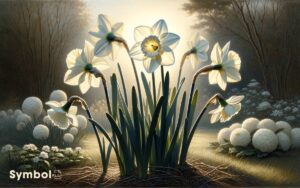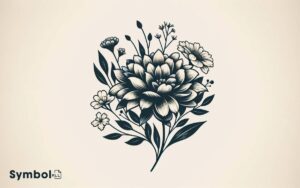What Flower Symbols Female Strength? Rose!
The rose epitomizes female strength, its thorns symbolizing defense and perseverance, while its delicate petals reflect a balance of softness and resilience. It’s known for robustness and its ability to regenerate, highlighting renewal and growth.
The orchid represents unyielding elegance and complexity, thriving in challenging environments, signifying endless adaptability. Each of its over 25,000 species exhibits survival strategies, like mimicking pollinators, which underscores its resourcefulness.
These flowers, among others, not only embody strength and beauty but also the diverse experiences of women. Discovering more about them reveals profound insights into resilience and elegance.
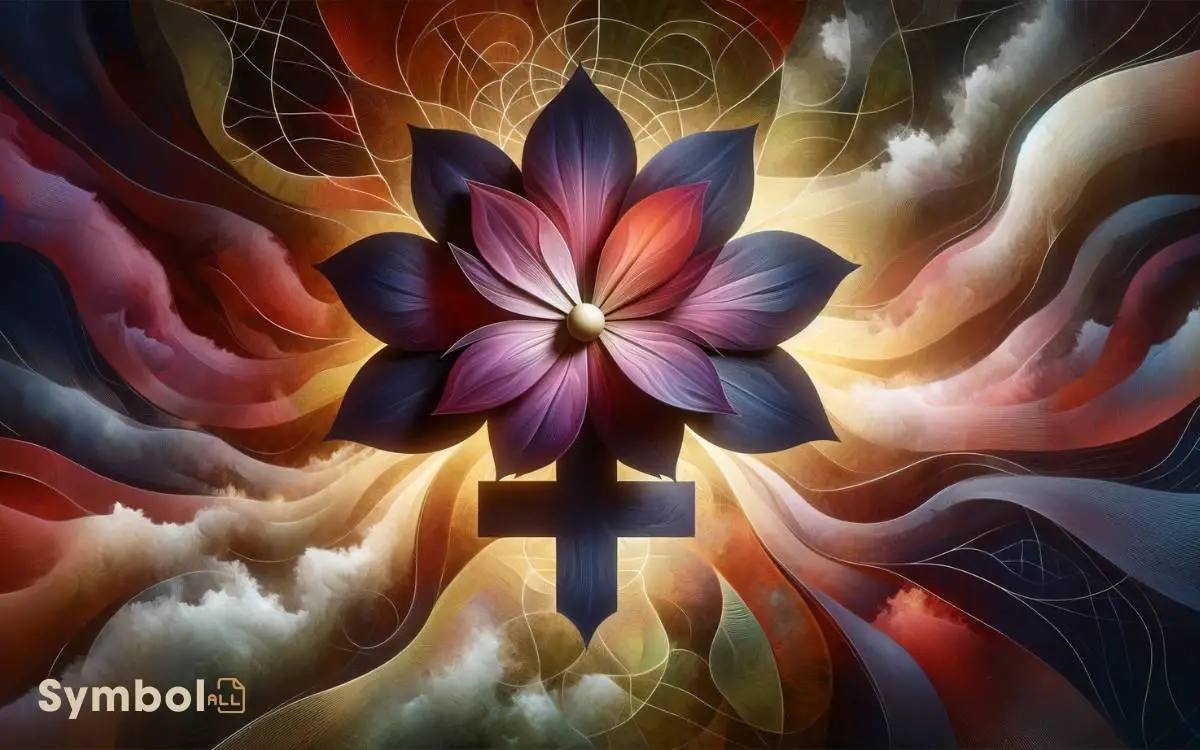
Key Takeaways
10 Flowers Representing Female Strength
| Flower Name | Symbolism of Female Strength | Origin | Additional Symbolisms |
|---|---|---|---|
| Roses | Beauty and resilience | Various | Love, honor, faith, beauty, balance |
| Orchids | Feminine power and strength | Global | Luxury, beauty, strength |
| Gladiolus | Moral integrity and strength | Africa | Remembrance, calm, integrity, infatuation |
| Sunflowers | Loyalty and longevity | America | Adoration, loyalty, vitality |
| Peonies | Prosperity and honor | Asia | Good fortune, happy marriage, compassion |
| Camellia | Perseverance and desire | Asia | Admiration, perfection, good luck |
| Gardenias | Secret love and purity | Asia | Purity, sweetness, secret love |
| Cherry Blossoms | Feminine beauty and strength | Japan | Renewal, the fleeting nature of life |
| Hibiscus | Delicate beauty | Asia | Femininity, beauty, glory |
| Black-eyed Susans | Justice and strength | North America | Encouragement, motivation |
The Symbolic Queen: Rose

Among the myriad of flowers symbolizing female strength, the rose stands out as the quintessential emblem, embodying resilience and grace with its thorns and delicate petals.
You’ll find that the rose’s biology underscores its symbolism. Its thorns represent defense and perseverance, characteristics often attributed to femininity’s enduring nature. Meanwhile, the delicate petals illustrate the balance of softness and strength.
Scientifically, roses are known for their robustness, thriving in various conditions, which parallels the adaptability often required of women. Additionally, the rose’s ability to regenerate from its own cuttings speaks to themes of renewal and growth.
This duality of resilience and grace captures the essence of female strength, making the rose not just a symbol, but an affirmation to the enduring power and complexity of femininity.
Unyielding Elegance: Orchid

While the rose strikingly captures the essence of female strength, the orchid stands as another potent symbol, embodying unyielding elegance and complexity.
This flower’s significance is rooted in its biological and cultural facets, which you’ll find fascinating:
- Adaptability: Orchids thrive in various environments, symbolizing the ability to flourish under diverse and challenging conditions.
- Diversity: With over 25,000 species, orchids exhibit an exceptionally wide variety, representing the multifaceted nature of female strength.
- Survival Mechanism: Some orchids mimic their pollinators, a clever survival strategy that highlights resilience and intelligence.
- Longevity: Orchids have a remarkably long blooming period, embodying enduring elegance and the persistence of female strength over time.
Understanding orchids in this light offers a deep appreciation for their symbolism related to female fortitude.
Resilience in Bloom: Lotus

In the domain of symbols representing female strength, the lotus flower stands out, renowned for its ability to emerge with beauty and resilience from the murkiest waters.
This remarkable plant’s journey from the depths to the surface is laden with scientific intrigue and symbolism.
The lotus seeds can withstand years of inactivity and sprout long after being dormant, an attribute paralleling the enduring spirit and rejuvenation.
Its roots anchor deeply in muddy riverbeds, drawing nutrients from challenging environments, mirroring the ability to thrive despite adversities.
The lotus’s daily cycle of submersion and re-emergence symbolizes purity and the continuous overcoming of obstacles, echoing the resilience inherent in the feminine spirit.
Its blossoms, untouched by the mud, epitomize the emergence of beauty and strength from challenging conditions.
Emblem of Hope: Daisy
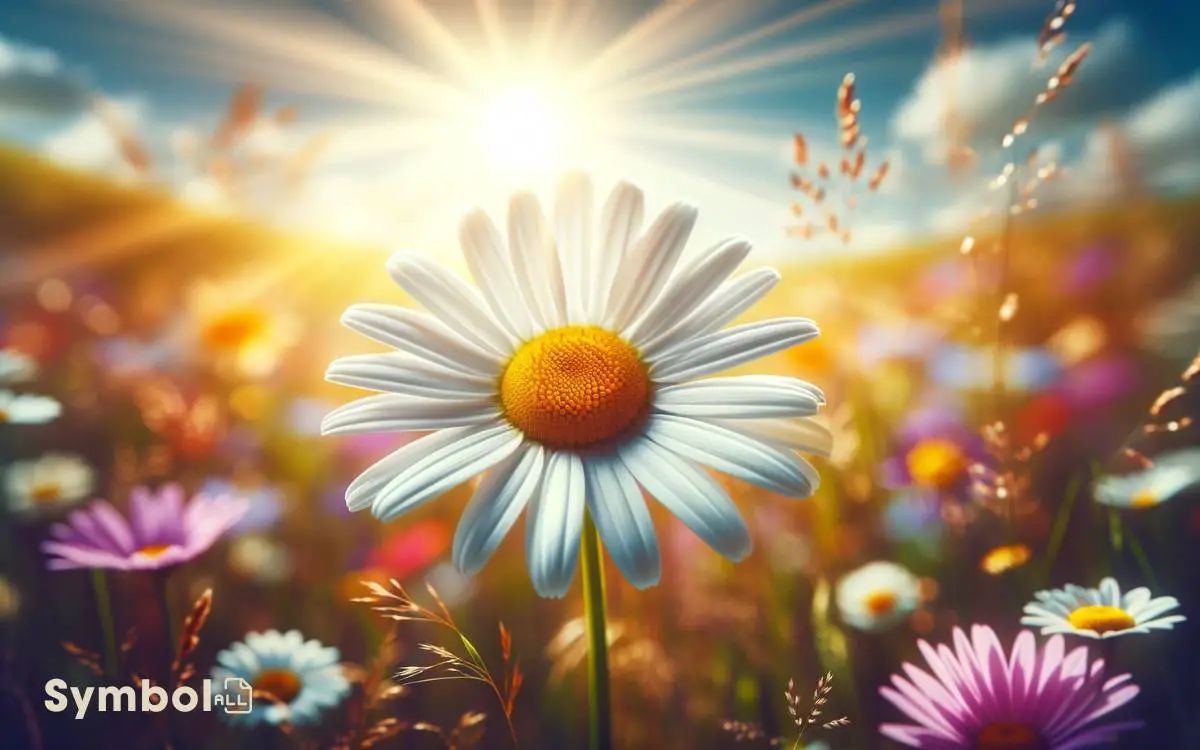
You’ll find that the daisy’s symbolism, rooted deeply in history, offers a holistic view of its role as an emblem of hope.
Analyzing its historical significance reveals a intricate narrative of femininity, purity, and resilience across various cultures.
Modern interpretations continue to evolve, reflecting contemporary values while maintaining the flower’s intrinsic qualities of hope and strength.
Daisy Symbolism Explained
Daisies represent an emblem of hope, symbolizing resilience and purity through their simple yet striking appearance.
Their symbolism is multifaceted and deeply rooted in their biological and ecological characteristics:
- Structural Resilience: Daisies exhibit a remarkable ability to thrive in diverse environments, symbolizing adaptability and strength.
- Radiant Blooms: The bright, open faces of daisies represent honesty, clarity, and the energy of a fresh start.
- Regenerative Growth: These flowers can regenerate from their own seed, symbolizing renewal and the endless cycle of life.
- Ecological Significance: Daisies support a wide range of pollinators, signifying the interconnectedness of life and the importance of nurturing relationships.
Through these attributes, daisies offer a profound metaphor for the enduring and hopeful spirit inherent in the concept of female strength.
Historical Significance
Why has the daisy, with its unassuming beauty, emerged as a powerful emblem of hope throughout history?
Its resilience and capacity to thrive in challenging conditions have made it a symbol of fortitude. This flower’s simplicity belies a complex biological adaptability, allowing it to symbolize hope against adversity.
| Era | Significance | Impact |
|---|---|---|
| Ancient Rome | Symbol of simplicity | Inspired art and culture |
| Medieval | Purity and innocence | Influenced literature |
| Renaissance | Renewal and rebirth | Shaped philosophical thought |
| Modern | Global peace and hope | Advocates environmental sustainability |
Analyzing the daisy through a historical lens reveals its profound influence on human culture. Its enduring symbolism showcases the flower’s ability to represent hope, resilience, and strength across diverse periods, embedding it deeply in the fabric of societal values.
Modern Interpretations
Building on its historical roots, the modern interpretation of the daisy as an emblem of hope reflects its continued relevance in today’s society through scientific and cultural lenses.
This perspective is grounded in an understanding that intertwines botany with symbolism, shedding light on why the daisy remains a potent symbol.
- Resilience: Daisies thrive in diverse environments, symbolizing adaptability and endurance.
- Purity and Innocence: Scientifically, the white petals represent cleanliness and simplicity in nature’s complexity.
- New Beginnings: The daisy’s lifecycle suggests regeneration and hope for the future.
- Positive Energy: Culturally, daisies are associated with sunlight, conveying a sense of brightness and optimism.
These attributes underscore the daisy’s emblematic role as a beacon of hope, illustrating its significance in both scientific and socio-cultural dimensions.
Power in Delicacy: Tulip
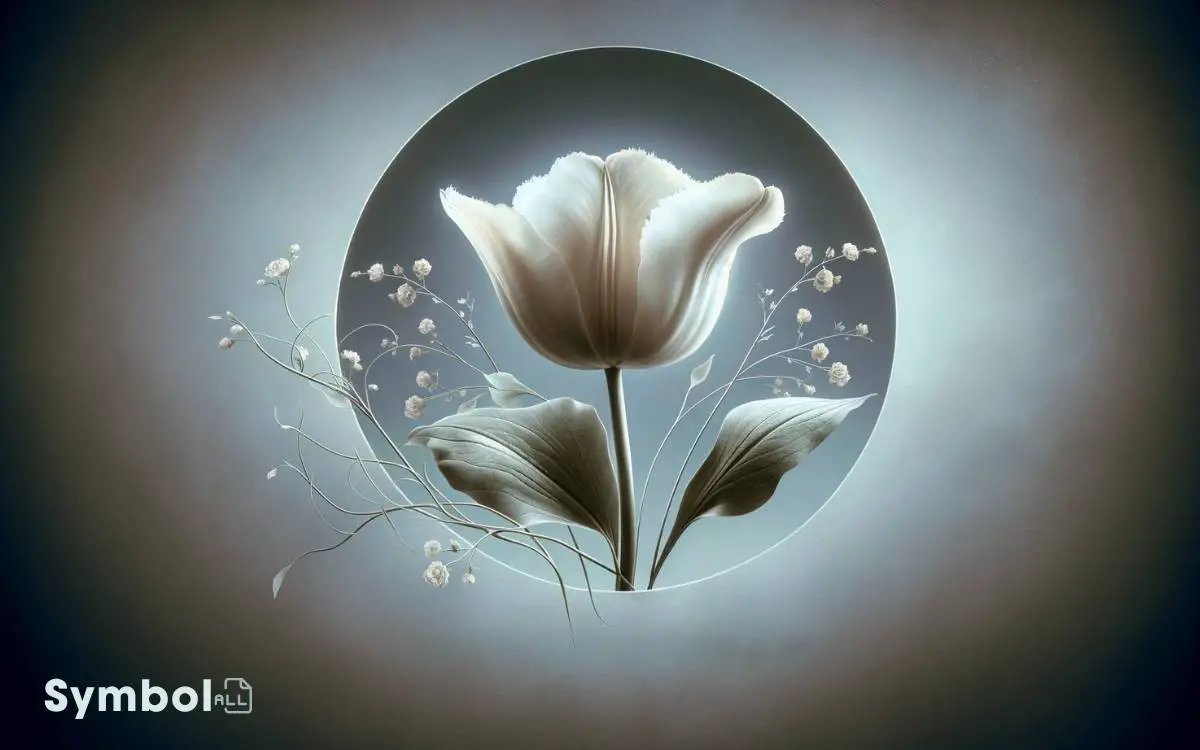
The tulip, embodying both elegance and resilience, serves as a profound symbol of female strength, illustrating how delicacy and power can coexist harmoniously.
Originating from the harsh climates of Central Asia, the tulip’s journey to prominence in the Ottoman Empire and later Europe mirrors the resilience and adaptability inherent to its nature.
Scientifically, Tulipa spp. have developed unique characteristics to withstand diverse and challenging environments.
Their bulbous structure allows them to endure periods of dormancy and bloom with renewed vigor, paralleling the enduring and cyclical nature of feminine strength.
Moreover, the tulip’s vast array of colors and forms represents the diversity of women’s experiences and strengths. This flower’s ability to thrive in adversity makes it an emblem of the power wrapped in delicacy, mirroring the complexities of female resilience.
Grace Under Pressure: Magnolia
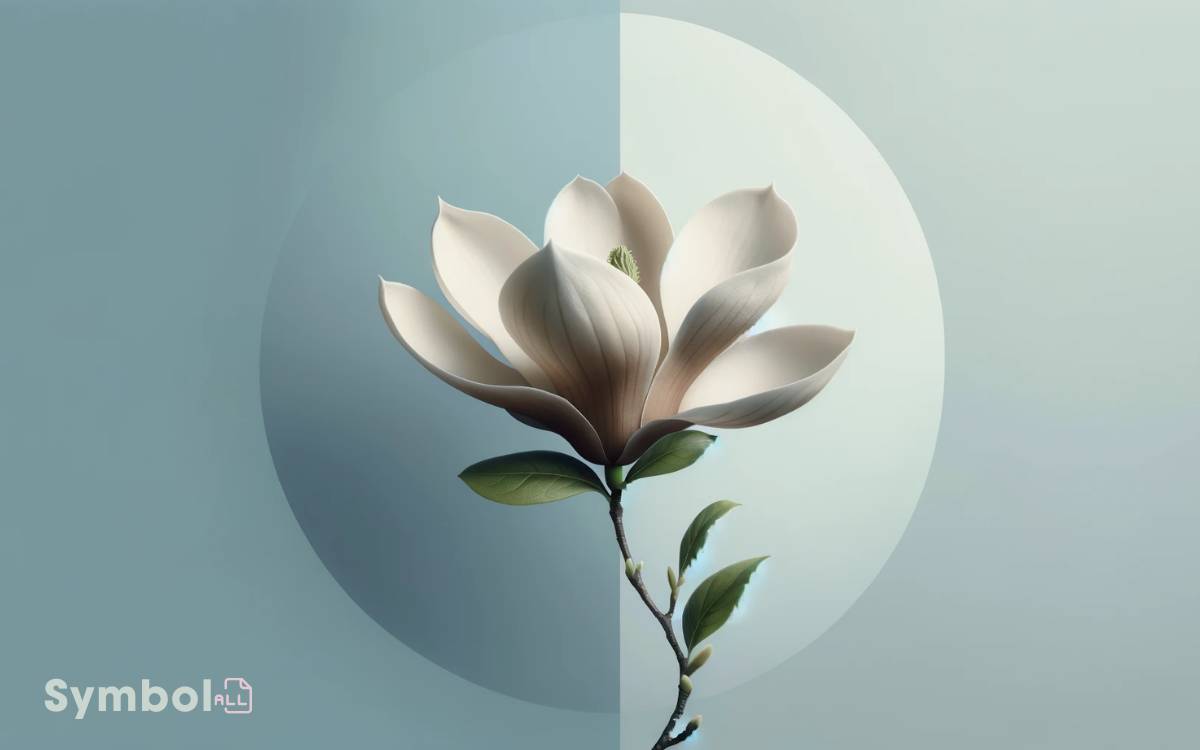
You’ll find the magnolia‘s resilience rooted in its ancient lineage, adapting over millennia to thrive in diverse environments. Its symbolism, deeply entrenched in various cultures, reflects strength, purity, and the dignity of perseverance.
As a timeless icon, the magnolia inspires with its capacity to both endure and bloom with grace under the most challenging conditions.
Magnolias Resilient Nature
Magnolia trees epitomize resilience, thriving in diverse environments with a remarkable ability to withstand both high and low temperatures. Their adaptability isn’t just a proof of their physical strength but also of their evolutionary prowess.
Here’s why you’ll find magnolias standing tall and proud:
- Bark’s Protective Shield: The thick, rugged bark protects against pests and diseases, ensuring longevity.
- Deep Root System: This allows them to access water in various soil conditions, enhancing their drought resistance.
- Broad Leaves: Capable of photosynthesizing in varying light conditions, they optimize energy production.
- Flower Structure: Their unique flower composition aids in minimizing damage from pollinators, preserving their reproductive capabilities.
These characteristics underline magnolias’ ability to thrive under pressure, embodying grace and resilience.
Symbolism in Cultures
Across various cultures, magnolias symbolize grace under pressure, embodying qualities of resilience and strength revered in societal narratives.
This emblematic representation stems from the magnolia’s botanical characteristics, including its ability to bloom amidst harsh conditions, and its ancient lineage, which predates even bees.
Scientific analyses reveal that magnolias have adapted unique pollination strategies, ensuring their survival through millennia.
Culturally, this resilience translates into a symbol of enduring strength and beauty in the face of adversity, making it an apt metaphor for female fortitude.
Different societies have integrated this symbolism into their traditions, art, and literature, highlighting the magnolia’s role in representing unwavering perseverance.
This multifaceted symbol serves not only as a demonstration of biological endurance but also as a beacon of inspiration across cultural narratives.
Timeless Inspirational Icon
The enduring magnolia serves as a timeless icon, epitomizing grace under pressure through its remarkable biological resilience and adaptability. This resilience isn’t just metaphorical; it’s deeply rooted in the magnolia’s evolutionary journey and its ability to thrive in varied conditions.
Here’s how the magnolia demonstrates its strength:
- Ancient lineage: Magnolias are among the oldest flowering plants, dating back millions of years, showing they’ve withstood the test of time.
- Tough leaves: Their leaves are thick and waxy, enabling them to conserve water and withstand pests.
- Versatile growth: They can grow in varied soils and climates, from acidic to neutral ground, showcasing adaptability.
- Pollination strategy: Magnolias evolved to encourage pollination by beetles, predating bees, illustrating their ability to adapt and survive through changing ecosystems.
Ancient Strength: Peony
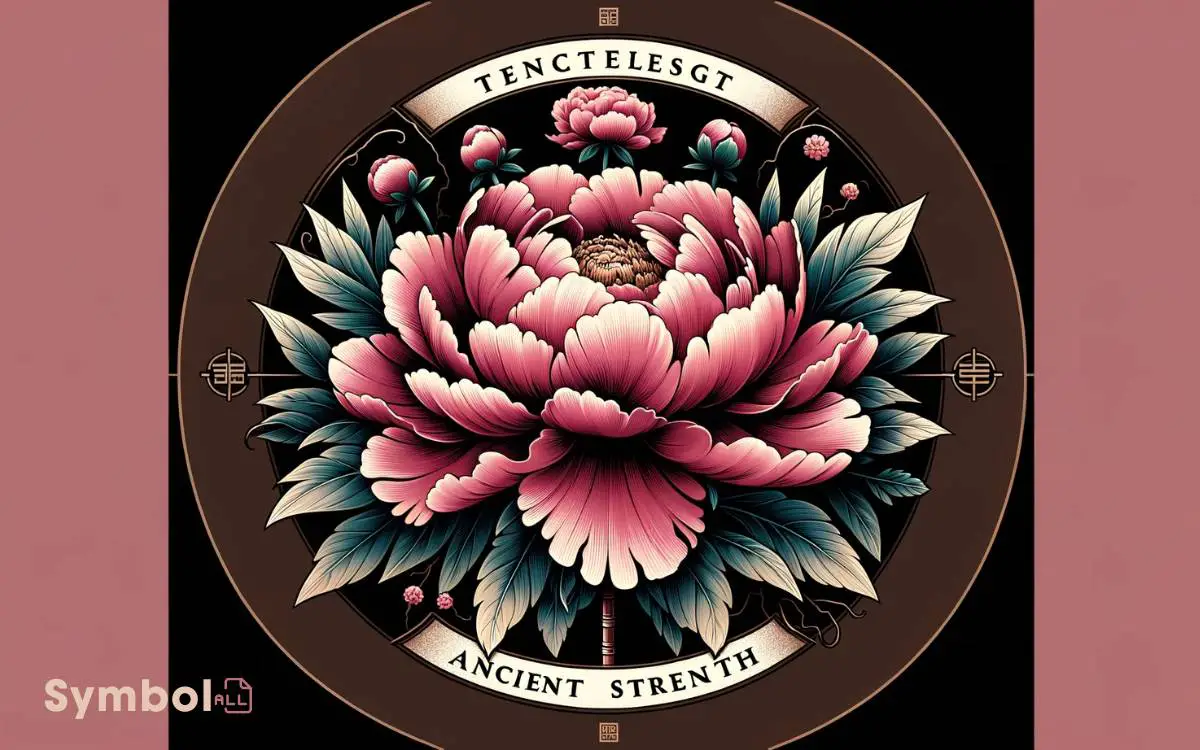
Peonies, revered in ancient times, symbolize female strength through their enduring and resilient nature. These perennials are known for their ability to thrive in harsh conditions, embodying the concept of resilience and beauty amidst adversity.
Scientifically, peonies possess a unique biological makeup that allows them to withstand cold winters and bloom year after year, a metaphor for enduring strength and renewal.
Their thick roots store nutrients, enabling them to survive unfavorable conditions and emerge stronger each season.
This characteristic parallels the resilience found in female strength, where adversity is faced with grace and toughness.
The peony’s lifecycle, from bud to bloom, encapsulates the journey of growth and the power of persistence, making it a fitting emblem for ancient and enduring female strength.
Fierce Independence: Sunflower

Embodying fierce independence, sunflowers turn their heads to follow the sun’s path across the sky, a behavior known as heliotropism. This movement isn’t just a whimsical dance; it’s a calculated survival strategy, showcasing the sunflower’s adaptability and resilience.
Let’s explore the specifics:
- Heliotropism: Sunflowers exhibit a daily motion, facing east at dawn and moving westward throughout the day, optimizing sunlight absorption.
- Root Depth: Their roots can extend several feet into the soil, securing water and nutrients, demonstrating robust self-sufficiency.
- Seed Production: Each sunflower head can contain thousands of seeds, ensuring prolific reproduction without reliance on external pollinators.
- Growth Conditions: Thriving in a range of environments, sunflowers exhibit remarkable adaptability, growing in both drought and nutrient-poor soils.
This botanical marvel mirrors the essence of independence, making it a fitting emblem of female strength.
Unseen Fortitude: Lavender
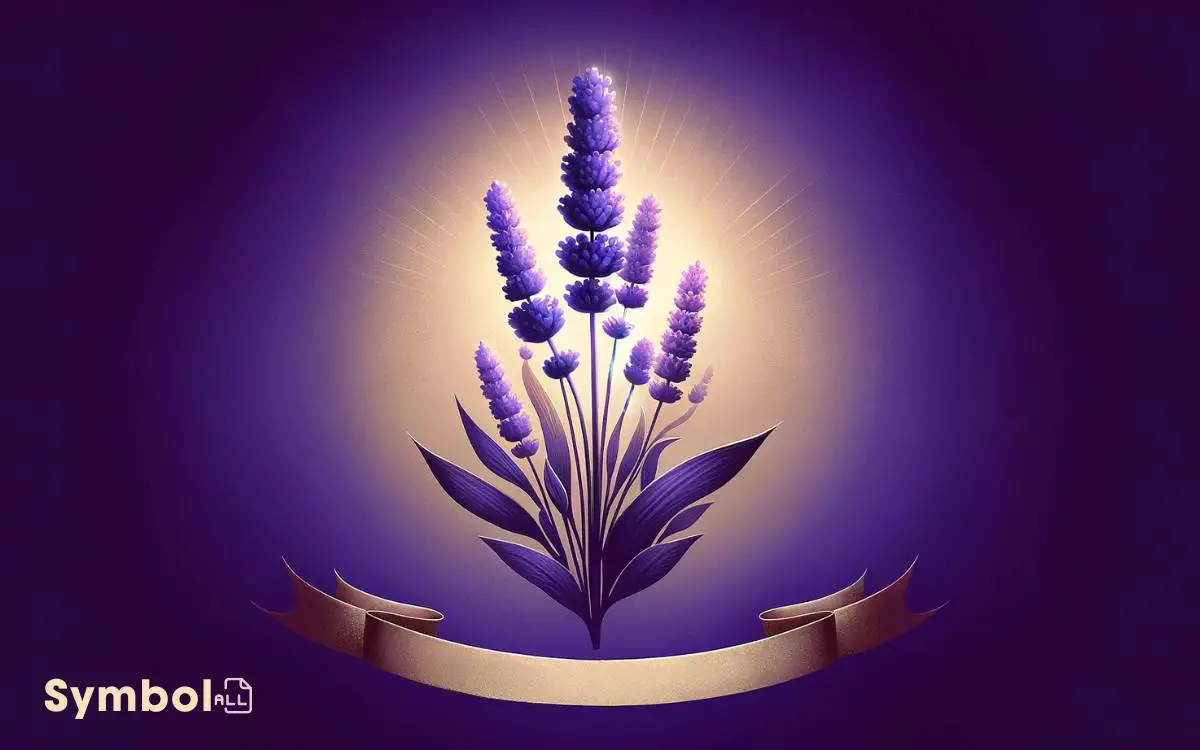
You’ll find that lavender’s symbolic meanings offer a rich tapestry of resilience and endurance, mirroring the unseen strength inherent in femininity.
By examining its cultivation, you learn how lavender thrives in harsh conditions, symbolizing an ability to persevere and adapt.
This botanical marvel showcases how resilience is cultivated, not just inherent, framing a narrative of growth through adversity.
Lavenders Symbolic Meanings
Lavender’s vibrant hues and enduring fragrance subtly symbolize the resilience and strength inherent in femininity.
Its significance spans several dimensions:
- Adaptability: Lavender thrives in harsh conditions, mirroring the adaptability required of women in various life stages.
- Healing Properties: Scientifically, lavender possesses antiseptic and anti-inflammatory qualities, representing the nurturing and healing nature often associated with femininity.
- Aroma: The distinct scent of lavender promotes calmness and well-being, akin to the soothing presence women often provide.
- Persistence: Lavender’s ability to regenerate and bloom annually exemplifies persistence and the capacity to rise above challenges.
Through these characteristics, lavender eloquently captures the essence of female strength, offering a nuanced understanding of its symbolic representation.
Cultivating Resilience Through Lavender
Beyond its symbolic meanings, understanding how to nurture lavender in your garden becomes a metaphor for fostering resilience and inner strength.
Lavender, with its hardy nature and ability to thrive in challenging conditions, requires specific attention to soil composition, sunlight, and water. Its roots demand well-drained soil, mimicking its native Mediterranean environment, preventing root rot and encouraging strong growth.
You’ll find that positioning it in full sunlight empowers its resilience, enhancing oil production which is central to its fragrance and medicinal properties.
In addition, minimal watering teaches you the balance of care and neglect, fostering a plant and metaphorically, a self that can withstand adversity.
This careful cultivation mirrors the process of building inner strength, where understanding and adapting to one’s environment leads to flourishing resilience.
Cultural Heroine: Jasmine
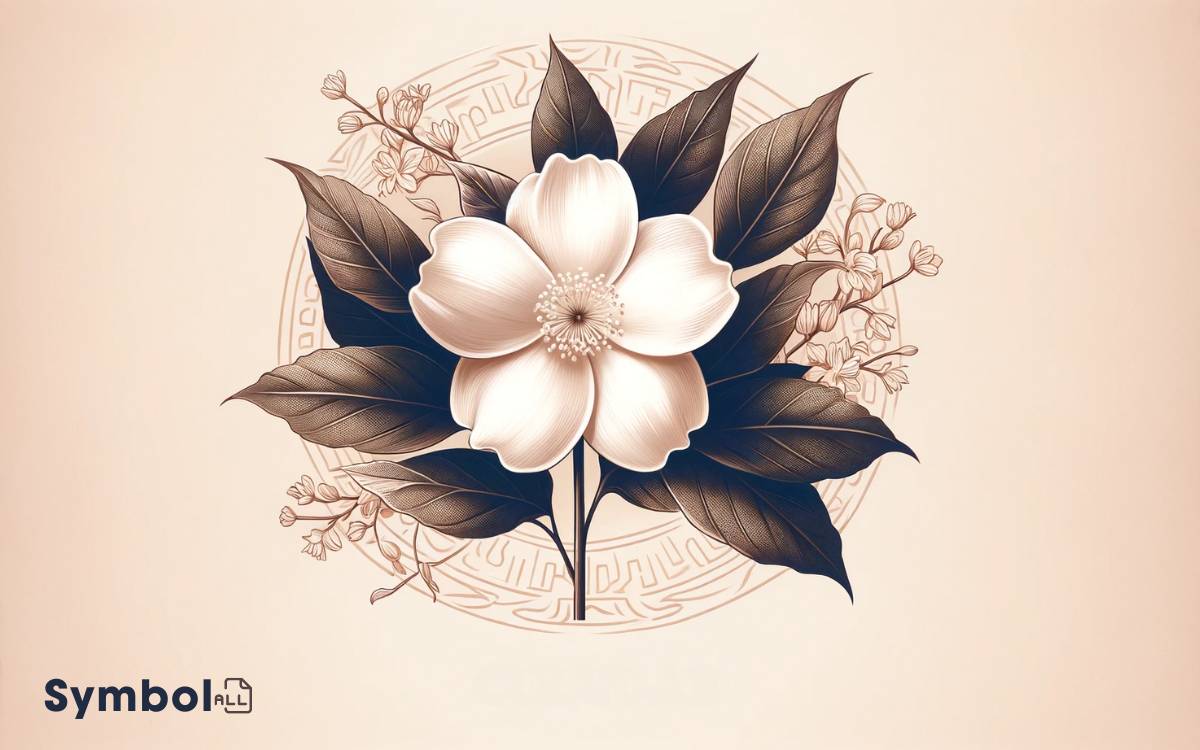
Jasmine, often associated with purity and beauty, plays a significant role in various cultures as a symbol of female strength and resilience. Its significance goes beyond its delicate appearance, embodying the essence of perseverance and empowerment.
- Cultural Representations: Jasmine is revered in Eastern cultures for its enduring fragrance, symbolizing women’s unwavering spirit.
- Phenolic Content: Scientifically, jasmine contains high levels of phenolic compounds, contributing to its resilience against pests and environmental stress.
- Therapeutic Applications: Its use in aromatherapy to alleviate stress and anxiety mirrors the calming influence women often provide in tumultuous situations.
- Symbolic Gestures: Presenting jasmine in various ceremonies across cultures honors women’s pivotal roles in fostering unity and strength.
This detailed analysis underscores jasmine’s profound symbolism in celebrating feminine fortitude.
Mythical Might: Iris
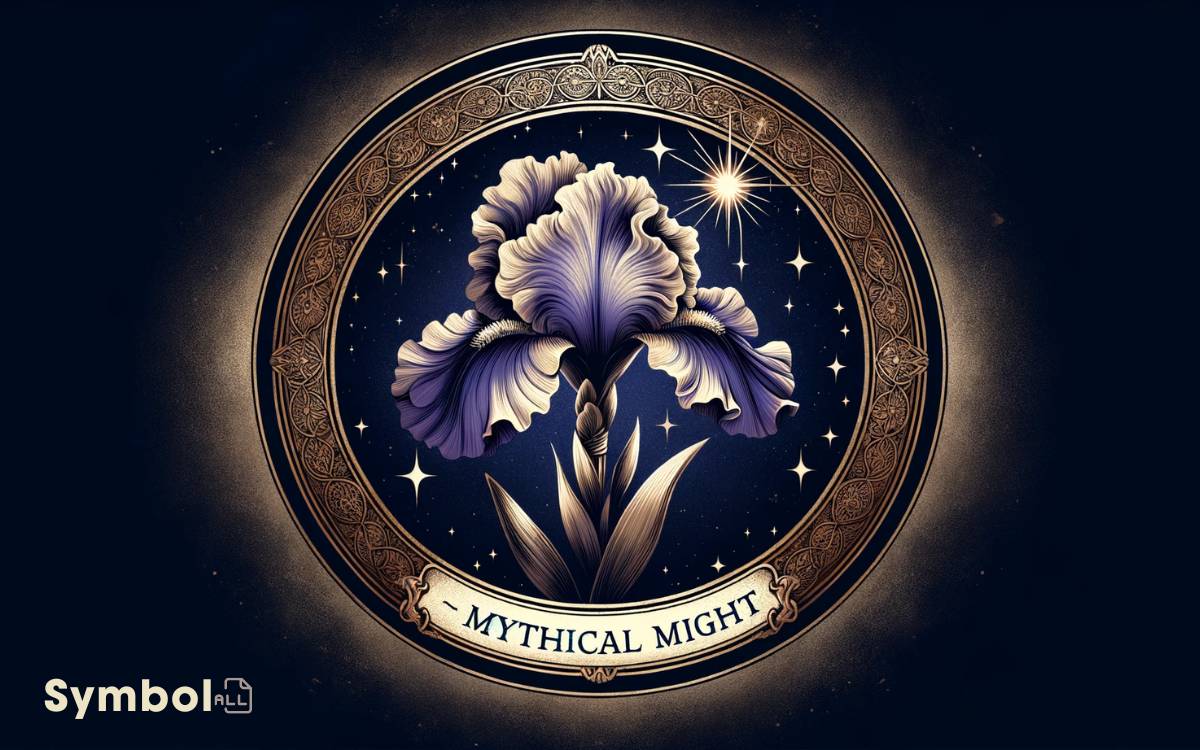
Frequently emblematic of wisdom and courage, the iris stands as a proof of female might through its mythological associations and biological resilience.
In Greek mythology, Iris is the goddess of the rainbow, serving as a messenger between gods and humans, symbolizing a connection between the divine and the earthly.
This bond imbues the iris with a profound sense of strength, showcasing its role as a bearer of good news and a guide for souls to their afterlife domains.
Scientically, the iris’s resilience is observable in its diverse habitats, thriving in both waterlogged and dry soils, reflecting adaptability and endurance.
Its wide range of colors, from deep purples to vibrant yellows, signifies versatility and the ability to thrive in various conditions, mirroring the multifaceted nature of female strength.
Femininity Redefined: Lily
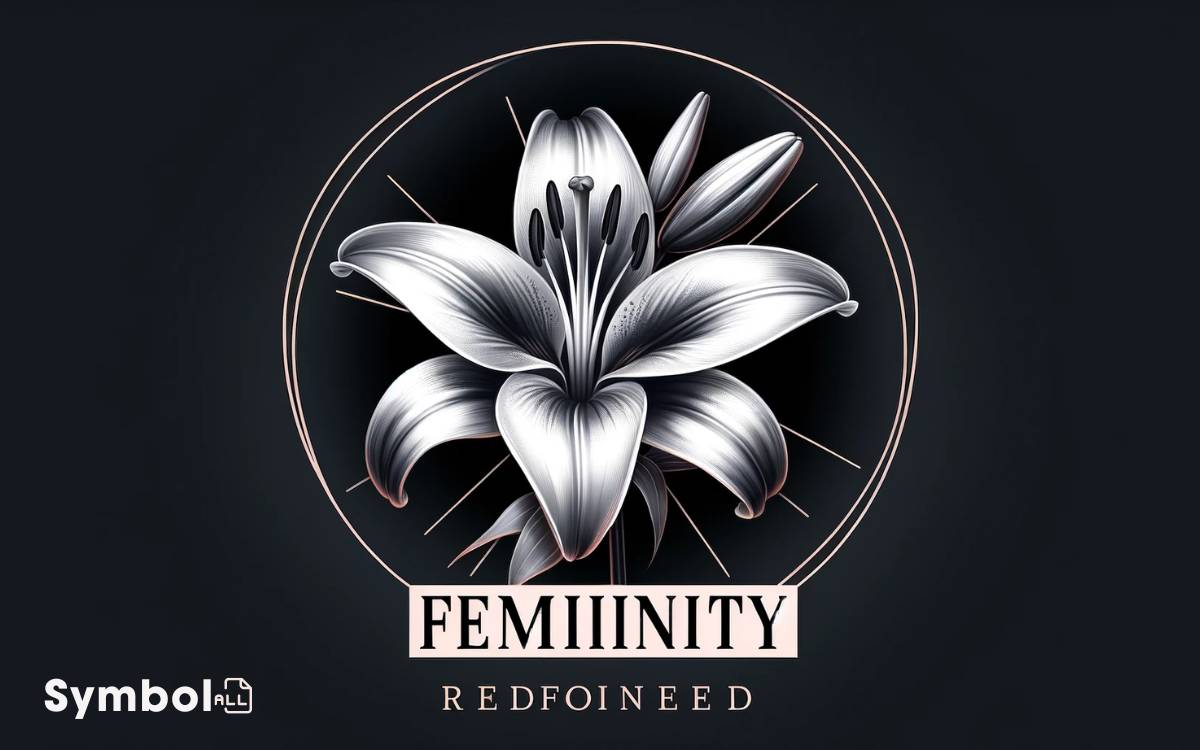
Similarly to the iris, the lily symbolizes a redefined concept of femininity, embodying purity, renewal, and unmatched strength in its delicate appearance and robust nature.
The lily’s significance is multifaceted:
- Purity and Innocence: Scientifically, the lily’s white petals represent purity and innocence, traits traditionally associated with femininity but recontextualized here to highlight inner strength and resilience.
- Renewal: Lilies bloom from bulbs that can survive harsh winters, symbolizing the ability to renew and emerge stronger.
- Unmatched Strength: Despite their delicate appearance, lilies are hardy flowers that can thrive in a variety of environments, embodying the strength and adaptability of women.
- Robust Nature: Biologically, lilies are designed to attract pollinators while being resistant to pests, reflecting a balance between attractiveness and toughness.
Warrior Spirit: Gladiolus
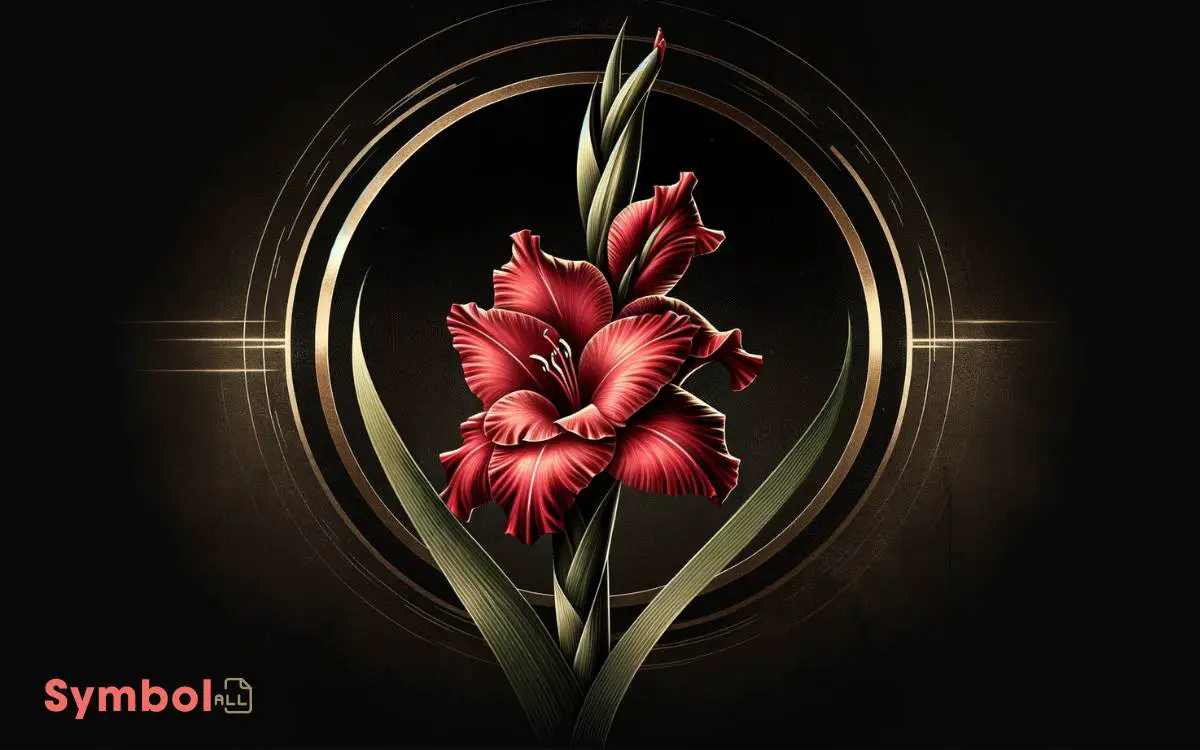
Embodying the essence of a warrior’s spirit, the gladiolus stands as a symbol of strength, moral integrity, and persistence in the face of adversity.
This striking flower, with its sword-like leaves, derives its name from the Latin word ‘gladius,’ meaning sword, which further accentuates its association with gladiators.
Scientifically known as Gladiolus, this genus encompasses a variety of species, each exhibiting vibrant colors and robust forms that mirror the qualities of a resilient warrior.
The gladiolus thrives in diverse climatic conditions, symbolizing adaptability and the ability to overcome challenging environments.
Its growth process, from a hardy bulb to a magnificent bloom, parallels the journey of inner strength and determination. This flower’s symbolism serves as a reminder of the power and courage inherent in facing life’s battles.
The Bloom of Rebirth: Poppy
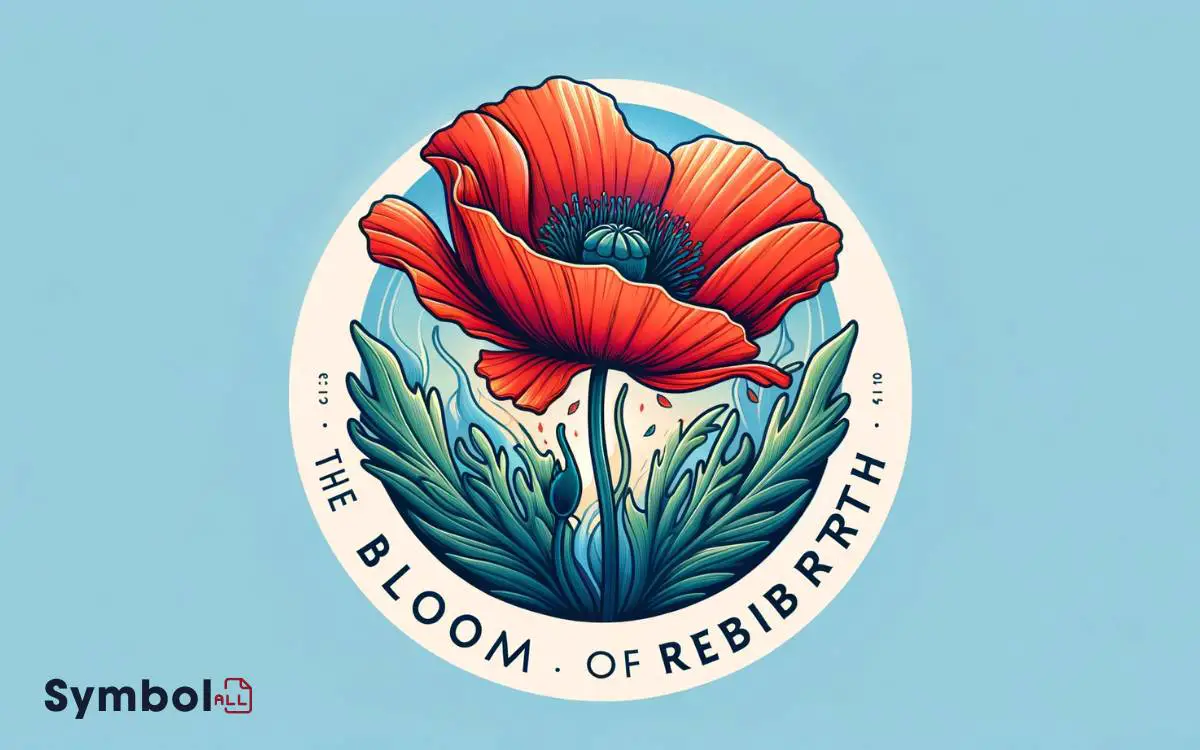
While the gladiolus symbolizes the enduring strength of a warrior, the poppy represents the profound resilience found in the cycle of rebirth and renewal.
The poppy’s significance is deeply rooted in its botanical and cultural history, offering insight into its association with female strength.
Consider these aspects:
- Phenology: The poppy’s life cycle, from seed to bloom, mirrors the resilience and renewal inherent in nature.
- Biochemistry: Alkaloids present in poppies, like morphine, symbolize the ability to alleviate pain, paralleling emotional resilience.
- Ecology: Poppies thrive in disturbed soils, showcasing adaptability and growth in challenging conditions.
- Symbolism: Historically, poppies are linked to remembrance and peace, underscoring the strength in healing and rebirth.
These characteristics highlight the poppy’s embodiment of strength through rebirth, resonating with the enduring spirit of resilience.
Conclusion
Each flower, from the commanding rose to the resilient lotus, symbolizes facets of female strength in nature’s vast canvas. Like the intricate petals of an orchid, female strength is both elegant and unyielding.
The daisy and tulip represent hope and power in delicacy, while the mythical iris and regal lily redefine femininity. The warrior spirit of the gladiolus and the poppy’s rebirth echo the enduring and transformative power of women.
Through these blooms, the essence of female fortitude is vividly encapsulated, illustrating a diverse spectrum of resilience and grace.

